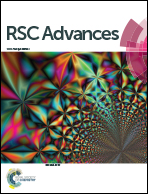Characterization and application of a novel inorganic polymer coagulant: polytianium-silicate-chloride
Abstract
A novel inorganic polymer coagulant, polytitanium-silicate-chloride, was synthesized by two approaches: (1) hydroxylation of a mixture of TiCl4 and fresh polysilicic acid (PSiA) at various Si/Ti molar ratios (ranging from 0.02 to 0.1) (denoted as PTSCc); (2) hydroxylated polytitanium chloride (PTC) combined with polysilicic acid was aged for 2 h in various Si/Ti ratios (ranging from 0.02 to 0.1) (denoted as PTSCm). PTSC was characterized by Fourier transform infrared (FT-IR) spectroscopy and applied in humic acid–kaolin water treatment. The results showed that PTSCc achieved better turbidity removal and PTSCm achieved better dissolved organic matter (DOM) removal. In addition, the best UV254 and DOC removals were attained when the Si/Ti molar ratio was 0.07. Floc properties were investigated to further evaluate the performance of this novel coagulant. The results showed that PTSCc flocs (flocs formed by PTSCc coagulation) grew faster and became larger than PTSCm flocs (flocs formed by PTSCm coagulation). The floc breakage factor was enhanced by both PTSCc and PTSCm. The floc recovery factor was enhanced by PTSCm. Flocs formed by PTSC were more open and looser than PTC flocs, especially flocs formed by PTSCc. Moreover, the addition of PSiA did not affect the sludge reuse of titanium salts.


 Please wait while we load your content...
Please wait while we load your content...